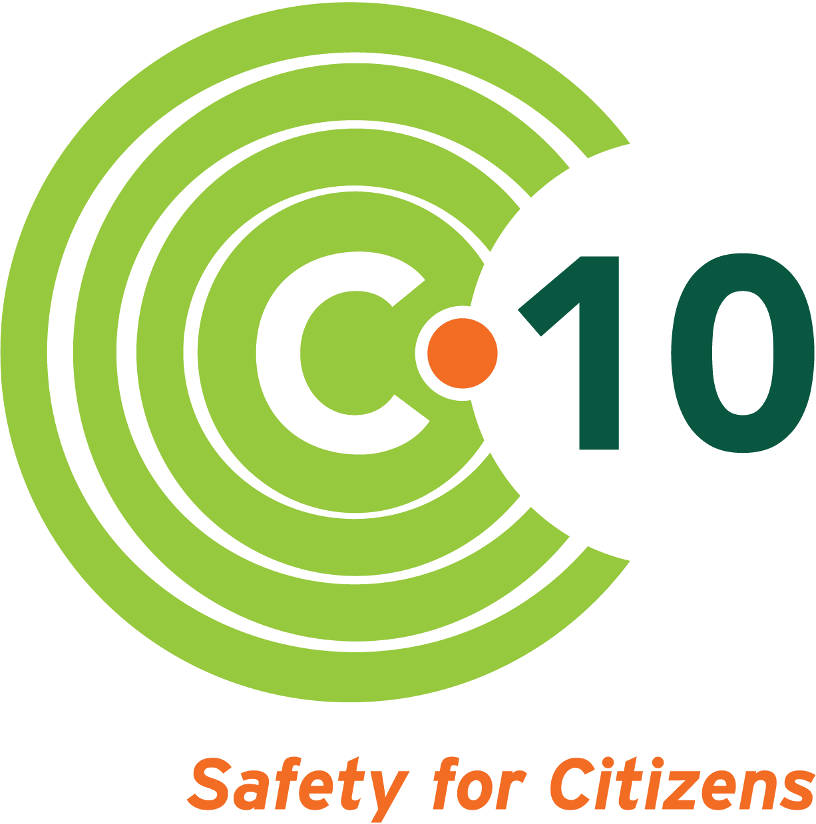C-10's 2025 Mid-Year Update

June 17, 2025
Dear C-10 Community,
The first half of 2025 has brought rapid changes and challenges to C-10, and similar experiences are being faced by many U.S. non-profits. Despite this, C-10 has been able to move forward in service of our mission to prioritize nuclear safety for communities around Seabrook Station. Thanks to the generous community support we receive, as well as timely technological advancements, we have even found new ways to make C-10 more resilient, efficient, and effective than ever before. We’re optimistic for continued progress, but know more challenges still loom ahead.
One of the matters C-10 is most concerned about is a Presidential Executive Order released on May 23rd, calling to ease safety standards for radiological emissions from nuclear power plants. This represents an increased and unacceptable health risk to all who live, work, and recreate in the communities around Seabrook Station.
Among U.S. reactor communities, C-10 has a unique advantage: we are the only independent group providing real-time, minute-by-minute, radiological monitoring of the air. We are not beholden to the owners of Seabrook Station, and we are not beholden to federal regulators. We work every day for YOU, citizens living within Seabrook Station’s 10-mile emergency planning zone (EPZ). We will continue to provide data to state health and emergency response agencies, as well as top research institutions like the Harvard School of Public Health.
Seacoast NH is already burdened with a pediatric cancer cluster and one of the highest rates of breast cancer in the nation. We find it unconscionable to consider allowing any increase to radioactive emissions. For decades elected officials and federal regulators have aimed to strike a balance between utilizing nuclear energy and the known risks of radiation by using a method known as “ALARA”: As Low As Reasonably Achievable. ALARA mandates that reactor sites use the best available tools within economic reason to limit radiological emissions. C-10 has always believed Seabrook Station could do even more to monitor and report the radiation it emits into the air, water, and soil (and we would even like to see a reduction in limits). However, the fight before us today is to, at the very least, hold the line at the current ALARA standards.
We are also researching and advocating against other mandates from recent Executive Orders which raise additional public and environmental health concerns:
- Reduce members of the Advisory Committee on Reactor Safeguards (ACRS): The ACRS was created by Congress in 1957 and mandates independent expert scientists to advise the Nuclear Regulatory Commission (NRC) on technical issues at reactors, such as Alkali-Silica Reaction (ASR) plaguing all of Seabrook Station’s concrete structures. This problem is incredibly complex and outside the expertise of plant staff.
- Mandate NRC licensing changes to help older nuclear plants to remain online longer: Keeping an existing nuclear plant online past the original design intent requires applying for an extended renewal license from the NRC. We are concerned this new mandate may result in inspectors feeling pressure to give nuclear plants a “passing” grade, even in the presence of clear safety issues. This relaxation on safety is a particular concern of ours in the face of the severe concrete degradation issues at Seabrook.
Further compounding our safety concerns, these same Executive Orders assert new nuclear technology like advanced reactors and small modular reactors are “safer.” We hear this as a tacit acknowledgement that legacy plants like Seabrook present tangible safety risks!
C-10 TRIFECTA: Three Core Programs for Safety & Accountability

As we enter the second half of 2025 there is uncertainty about how Seabrook Station may be impacted by this myriad of proposed regulatory changes. What we do know with certainty is that C-10 will continue fighting for nuclear safety and accountability, to keep our beautiful local environment safe for all to enjoy. We are very fortunate the Commonwealth of Massachusetts provides us critical funding for radiation monitoring. However, we rely on donations to support all of our key programs, including public education, research, and advocacy work. Our efforts are only possible because of the generous contributions we receive from nuclear safety advocates like you. We are deeply grateful for any support.
With best wishes for safety and good health,
Sarah Abramson, Executive Director
C-10 Research & Education Foundation
11 Chestnut St., Amesbury, MA 01913


